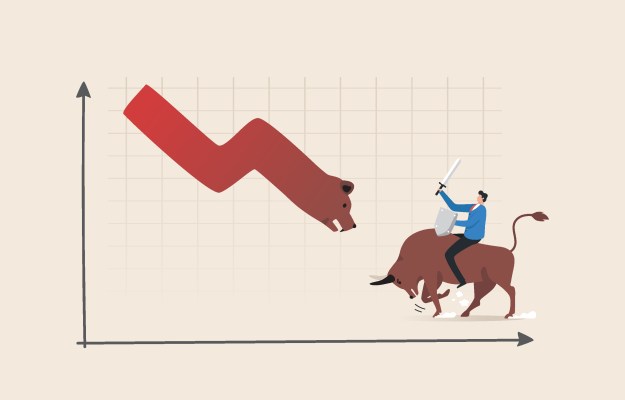It seems the younger a startup is today, the better its fundraising prospects.
Recent data from Carta pushes back against the narrative that 2023 has been tough on startups that are not building an AI product. In fact, grouping startups by maturity yields a very different picture.
The Exchange explores startups, markets and money.
Read it every morning on TechCrunch+ or get The Exchange newsletter every Saturday.
Earlier-stage startups are seeing stronger valuations and smaller declines in total capital availability, welcome boons in a year of mostly negative news. However, late-stage investment has been in retreat, and since this segment usually accounts for the most dollars, people have been making the mistake of conflating a dramatic late-stage recession with general startup malaise.
 We don’t mean to be glib. There are certainly many early-stage startups that are struggling and late-stage startups that are thriving. And Carta’s data is predicated on its customer base, which makes the information useful and directional, but not whole.
We don’t mean to be glib. There are certainly many early-stage startups that are struggling and late-stage startups that are thriving. And Carta’s data is predicated on its customer base, which makes the information useful and directional, but not whole.
Still, the trends that we can spy are an effective argument against the logic of startups being encouraged to stay private as long as possible. For private-market investors looking to make the most of their investment, baking startups in the oven until they were fully ready worked for some time, but this method of running and scaling tech companies no longer looks so winsome.
Perhaps taking an early path to an IPO was the right idea all along. Let’s explore.
How fare startups today?
Parsing data from Carta on the third quarter of 2023, it’s clear that grouping startups by stage makes sense. For instance, the seed-stage was deemed to be immune to decline, but there’s only been a 58% decline in capital raised by seed-stage startups in Q3 2023 compared to Q4 2021. Meanwhile, Series A, B, and C rounds were all down 80% or more in value in the third quarter compared to Q4 2021.
And the older the companies in your group, the worse it gets: Early-stage startups are having an okay time of fundraising, middle-stage startups are finding it more difficult, and late-stage startups are pretty much finding out what Sisyphus felt like. For example, 26% of Series D rounds that Carta tracked in Q3 were bridge rounds.
Valuations aren’t following the same line, though. These have not fallen as much as investment activity, and that’s true from seed stage all the way to Series C rounds. However, grouping startups by stage is once again illuminating, with this somewhat incredible nugget: Median pre-money valuations at seed stage actually rose 11% in Q3 2023 compared to Q2 2023.
Now, we should note that this bit of Carta’s data only counts priced seed rounds. Still, it indicates that there are quite a few new companies out there that VCs find exciting enough to fund at the same levels they used to.
On the other hand, growth-stage companies have struggled to keep up their valuations for a while. In Q2 2023, Carta found that Series D valuations had declined 55% from Q1 2021. Now, the hype hadn’t actually picked up that early in 2021, so we didn’t expect that comparison to be that disfavorable, but growth-stage companies are clearly in a world of trouble. Again, we see that the younger a company is, the better its fortunes: By the end of Q3 2023, Series C valuations were down 58% from Q4 2021, and Series B rounds were about 45% cheaper.
The question now is: Are these companies simply not good enough to keep raising capital until they can find a proper exit?
So much for all that
IPOs used to be a way to raise money before venture capital became available at a scale that would let startups grow into valuations in the tens of billions. But as the venture space grew richer, IPOs became more akin to coronations. If there’s always going to be more funding available, why not just stay private, raise more money, and go public when your company is fully baked?
Perhaps the massive decline of late-stage investment will push the startup market back in that direction. For one, lower venture capital availability will make an IPO more attractive as a fundraising vehicle, since those can raise a lot of money. Second, in being forced to contend with less capital, startups will have to become more profitable earlier, which, in turn, would make them more viable IPO candidates.
You could also infer from the above analysis that late-stage capital is simply not a guarantee. The myth has been punctured, in other words. By the time their companies reach Series C, founders might simply start considering if it’s time to shed the startup tag and start operating like a company that can go public. That would be far earlier than we’ve seen in recent years, and maybe it’s for the best.
